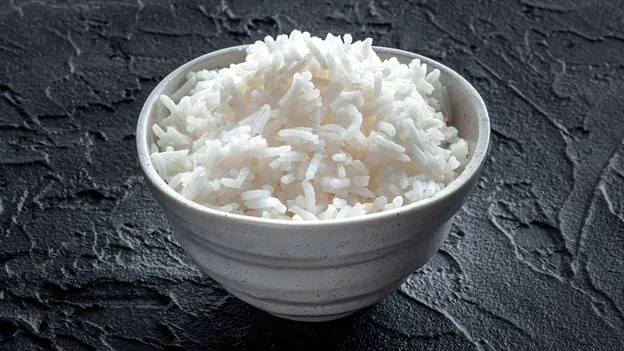
Uncovering the Hidden Dangers: How Climate Change is Raising Arsenic Levels in Your Rice
2025-04-18
Author: Lok
Rice: A Global Staple Under Threat
Rice feeds more than half of the world's population, making it a critical food source. However, a troubling new study reveals that climate change could significantly raise arsenic levels in this beloved grain, posing serious health risks.
The Arsenic Problem: More Serious Than You Think
Arsenic, a naturally occurring poison, often contaminates rice due to its presence in the soil of paddy fields. While some rice varieties contain arsenic levels within safe limits, others can be dangerously high. Chronic exposure, even at low levels, has been linked to cancer, cardiovascular diseases, and diabetes.
A Groundbreaking Study Raises Alarms
Researchers conducted a comprehensive 10-year study across various locations in China, growing 28 different rice strains. They discovered that as atmospheric carbon dioxide (CO2) and temperatures rise, so do the arsenic levels in rice, potentially leading to an estimated 19.3 million additional cancer cases in China alone.
"This is shocking," remarked Lewis Ziska, an associate professor at Columbia University and co-author of the study. "Both increasing CO2 and rising temperatures are exacerbating the arsenic problem in rice."
A Grim Future Awaits?
The study paints a worrying picture for the future of rice cultivation, particularly if greenhouse gas emissions continue unchecked. In fact, researchers' worst-case scenario predicts catastrophic increases in arsenic levels beyond those estimated by the Intergovernmental Panel on Climate Change (IPCC).
Global Implications: Not Just a Local Issue
While the study focused on China, the repercussions of elevated arsenic levels could extend globally, impacting rice production in Europe, the United States, and beyond.
Limitations and Future Research Needs
Despite its robustness, the study has limitations, such as assumptions regarding future rice consumption patterns. Without innovation and intervention, the situation will likely worsen.
Why Arsenic Is a Long-Standing Threat
Historically, arsenic has been known for its toxicity, causing harm when consumed over time. It has now been reclassified as a potent carcinogen by health authorities, heightening concerns about its impact on global health.
Cooking Tips to Mitigate Your Risk
There are ways to reduce your exposure to arsenic from rice. Choose varieties with lower arsenic levels, such as basmati rice, and consider parboiling your rice before cooking.
Changing Our Approach to Rice Cultivation
Experts are experimenting with innovative water management strategies and other agricultural practices to lower arsenic levels in rice. These include shifting from continuous flood irrigation to intermittent flooding and exploring new rice varieties that absorb less arsenic.
A Call to Action for Policy Makers
There is an urgent need for stricter regulations on arsenic levels in food, especially rice, given that millions depend on it. Policymakers must take a proactive approach to protect public health by addressing this growing issue.
Conclusion: Avoiding a Crisis in Our Plates
As research continues and awareness grows, it becomes imperative that both consumers and governments act swiftly. These steps are crucial for retaining rice as a safe and viable food source in a warming world.



 Brasil (PT)
Brasil (PT)
 Canada (EN)
Canada (EN)
 Chile (ES)
Chile (ES)
 Česko (CS)
Česko (CS)
 대한민국 (KO)
대한민국 (KO)
 España (ES)
España (ES)
 France (FR)
France (FR)
 Hong Kong (EN)
Hong Kong (EN)
 Italia (IT)
Italia (IT)
 日本 (JA)
日本 (JA)
 Magyarország (HU)
Magyarország (HU)
 Norge (NO)
Norge (NO)
 Polska (PL)
Polska (PL)
 Schweiz (DE)
Schweiz (DE)
 Singapore (EN)
Singapore (EN)
 Sverige (SV)
Sverige (SV)
 Suomi (FI)
Suomi (FI)
 Türkiye (TR)
Türkiye (TR)
 الإمارات العربية المتحدة (AR)
الإمارات العربية المتحدة (AR)